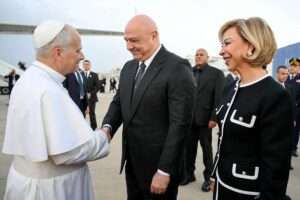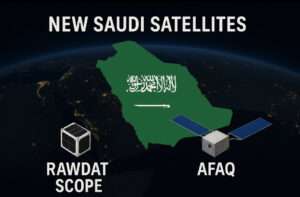Written by Zahack Tanvir
In a welcome and long-overdue move, the United States is once again edging closer to officially designating the Muslim Brotherhood as a terrorist organization. This development, confirmed by White House Press Secretary Caroline Leavitt earlier this week, marks a significant step forward—not just for American national security, but for global efforts to confront the ideological infrastructure of political Islamism.
It is crucial to understand why the Muslim Brotherhood must be outlawed—why several traditional Islamic nations have already taken that step, how the organization systematically infiltrates democratic systems, and what its ultimate objectives are once it gains access to power.
But before we unpack the ideological threat and long-term agenda of the Brotherhood, let’s first examine the current momentum surrounding its proposed ban.
The renewed momentum comes after a bipartisan bill introduced in mid-July by Republican Congressman Mario Díaz-Balart and Democratic Congressman Jared Moskowitz.
This rare cross-party consensus highlights a growing recognition within US political circles: that the Brotherhood, despite its carefully crafted image as a political movement, operates as the ideological mothership for a wide network of violent Islamist actors, from Hamas to Al-Qaeda offshoots.
As someone who has spent years researching the Muslim Brotherhood’s influence—particularly its transnational reach into South Asia, Europe, and North America—I can say without hesitation that this recognition is not only justified, but necessary.
The Brotherhood is not simply a political group with grievances; it is a global project rooted in the radical vision of Hasan al-Banna and Sayyid Qutb, aiming to create an Islamic order through infiltration, indoctrination, and ultimately, imposition.
What’s encouraging is that this time, the congressional effort is not operating in a vacuum. Influential policy institutions such as the Heritage Foundation, the Israeli-American Civic Action Network (ICAN), and the American Mideast Coalition for Democracy (AMCD) have come out strongly in support of the bill.
These organizations have consistently highlighted the Brotherhood’s dual strategy: presenting a moderate face in public while funding, supporting, and inspiring extremist violence through proxies.
One of the most consistent advocates of this legislative push has been Senator Ted Cruz, who has introduced similar bills since 2015. His persistence is commendable.
Cruz rightly argues that the Brotherhood’s role as an ideological incubator for terrorism cannot be separated from its political activities. Designating it as a Foreign Terrorist Organization (FTO) is not just symbolic—it is a strategic necessity.
Infiltration by Design: The Muslim Brotherhood’s Long March Through the West.
The Muslim Brotherhood’s threat to liberal democracies didn’t begin in Washington or Paris—it began in Cairo, in the aftermath of the Ottoman Empire’s collapse in 1922. As Muslims living under British and French colonial rule began to embrace Western political systems and abandon traditional religious frameworks, a void was created—one that Hassan al-Banna, a Sufi preacher from Egypt, sought to fill.
In 1928, he founded Jamia Hasafia al-Khairiyyah with the goal of restoring the Islamic Caliphate. Unlike traditional Islamic theology, which centers on the concept of Tawheed (monotheism), al-Banna shifted the purpose of Muslim existence toward the establishment of a political Caliphate, even if it meant rebellion against existing governments.
Facing limited appeal among Shiites and Salafis due to the Sufi undertone of his movement, al-Banna rebranded the group as Al-Ikhwan al-Muslimeen—the Muslim Brotherhood. The name change gave the group a broader religious appeal and set the stage for its rapid expansion throughout Egypt and the Arab world.
After al-Banna’s assassination in 1949—following the Brotherhood’s role in the killing of Egyptian Prime Minister Mahmoud an-Nukrashi Pasha—the leadership passed to Sayyid Qutb, an ideologue whose writings would shape the blueprint for modern jihadist movements. A potent mixture of theocratic absolutism and political militancy, Qutb drew inspiration from radicals like Abul Ala Maududi and Nawab Safavi, creating a revolutionary Islamist doctrine that ultimately inspired the 1979 Iranian Revolution and later groups like Al-Qaeda and ISIS.
Qutb’s Quran’s exegesis, ‘In the Shade of the Qur’an’, became the ideological lodestar for jihadists. He quoted Marx and Lenin in the Quranic explanation, more than Prophetic traditions of Hadith. Yet despite this documented legacy, many Western policymakers continue to mistakenly attribute radical Islamic terrorism to Salafism or Wahhabism.
In truth, the intellectual nucleus of most modern jihadist movements is rooted in the Muslim Brotherhood, not the Saudi school of thought.
Osama bin Laden’s mother, Hamida al-Attas, confirmed that her son’s radicalization began under the influence of Abdullah Azzam, a Palestinian Brotherhood member who recruited him at King Abdulaziz University in Jeddah. Ayman al-Zawahiri, the current leader of Al-Qaeda, also began his journey with the Brotherhood.
The Murshid Doctrine—Brotherhood’s Sunni Wilayat-e-Faqih.
While Iran’s Khomeinist regime operates on the doctrine of Wilayat-e-Faqih—the rule of the jurist, who acts as the supreme political and spiritual leader until the return of the Mahdi—the Muslim Brotherhood has its own mirror version: the concept of the Murshid Aam.
This Murshid is not merely a religious guide but is seen by the Brotherhood’s inner circle as God’s vicegerent on earth—an infallible leader whose authority must be obeyed across national and ethnic boundaries.
Just as Shia militias across Iraq, Syria, and Lebanon take orders from Tehran’s Supreme Leader, the Brotherhood envisions a Sunni parallel, where all conventional Muslim-majority armies and political systems fall under the command of the Murshid, stationed in Egypt or Turkey, in pursuit of a transnational Caliphate.
This totalitarian theocratic model nearly came to fruition during the so-called Arab Spring, with Washington’s tacit blessings under the Obama administration. Hillary Clinton’s State Department courted Brotherhood figures and portrayed them as modern “moderate Islamists” ready for democracy—when in reality, they were building a shadow Caliphate.
From Cairo to Tripoli, from Ankara to Gaza, the Brotherhood’s rise was followed by chaos, bloodshed, and institutional collapse. Rather than reform, they brought repression; instead of unity, they delivered sectarianism and civil war. Their ideological empire collapsed flat-faced, exposing the dangerous illusion of a religious autocracy masked as populist revolution.
Why the West Must Learn from the Arab World’s Battle Against the Muslim Brotherhood.
In recent decades, some of the most pivotal blows to the ideological foundations of the Muslim Brotherhood have come not from Western think tanks, but from within the Islamic scholarly world itself.
One of the most significant figures in this effort was the late Shaykh Rabee bin Hadee al-Madkhali of Saudi Arabia. He played a critical role in exposing the writings and revolutionary agenda of Syed Qutb, the Brotherhood’s chief ideologue.
There was a time when even the esteemed Shaykh Nasiruddin al-Albani—Saudi Arabia’s former top Hadith scholar—expressed admiration for Qutb’s literary flair. But as Qutb’s Leninist and Marxist undercurrents became clearer, Shaykh Albani publicly retracted his earlier praise and thanked Shaykh Rabee for unmasking the subversive project wrapped in the cloak of Political Islam.
Similarly, in Yemen, Shaykh Muqbil bin Hadee al-Wadee, a respected Sunni scholar, issued stern warnings against Hamas decades ago. Though widely seen today as merely a resistance group, Hamas is ideologically tethered to the Muslim Brotherhood. Shaykh Muqbil’s fatwas helped shape the Gulf’s policy approach toward Hamas, emphasizing the danger of mixing religion with militant politics.
In India, Shaykh Mohammed Rahmani, a senior scholar from the Sanabil seminary, stood out for his rare courage in publicly denouncing Hamas and its links to the Brotherhood. His stance resonated deeply in Indian policy circles, which had already begun cracking down on Hamas-style outfits like the Popular Front of India (PFI).
In September 2022, Indian authorities banned the PFI under anti-terror laws—not out of Islamophobia, but because the group’s ideology mirrored Hamas: anti-national, sectarian, and revolutionary under the pretext of Muslim victimhood. Indian Muslims supported the government’s move. Not a single respected scholar termed it Islamophobia.
Several Middle Eastern nations have officially outlawed the Muslim Brotherhood, citing national security concerns and its perceived role in fomenting political instability. Egypt was the first—outlawing the Brotherhood in 2013 following the overthrow of President Mohamed Morsi, branding it a terrorist organization.
Saudi Arabia and the United Arab Emirates followed suit, similarly citing the group’s alleged interference in state institutions and support for extremist ideology. Bahrain and Syria also instituted bans, framing the Brotherhood as a subversive political force.
Meanwhile, even Russia has designated the Muslim Brotherhood as a terrorist organization, and European nations like Austria and Germany have taken legal steps to restrict Brotherhood-affiliated groups over concerns of radicalization.
In the recent past. On April 23, 2025, Jordanian authorities imposed a sweeping ban on the Muslim Brotherhood following the arrest of 16 individuals allegedly linked to a plot involving rockets and drones aimed at compromising national security. The Interior Ministry declared the Brotherhood illegal, ordered the closure of its offices, and initiated the seizure of its assets.
A Lesson for the United States.
The U.S. has taken steps to designate Hamas as a terrorist organization. But it has stopped short of targeting its ideological fountainhead—the Muslim Brotherhood—which continues to operate under the radar in America through soft-power institutions, advocacy groups, and educational fronts. Ignoring this root system while attacking only its violent offshoots is like trimming weeds while allowing the roots to spread underground.
Yet because Islamists often hold positions of influence—especially in media, NGOs, and student organizations—they project themselves as the voice of all Muslims. They manufacture or hijack grievances, escalate identity crises, and use them as justification for their activism. When criticism arises against Islamists, they deflect it onto Muslims at large, thus dragging ordinary believers from Camp-A into the clutches of Camp-B.
This is where Western policymakers often err gravely—by failing to distinguish between Islam as a faith and Islamism as a political ideology. Islam is a religion of worship, centered on belief in the oneness of God, prayer, fasting, charity, pilgrimage, and personal ethics. Islamism, by contrast, is a political ideology—a hijacking of religious sentiment to push for regime change, identity-based agitation, and often, violent revolution. If Camp-A represents everyday Muslims, Camp-B represents Islamists. The two are not only distinct but often in opposition.
Unfortunately, both the far-Right’s xenophobic rhetoric and the far-Left’s identity tokenism serve to strengthen the Islamists. The far-Right uses blanket criticism of Muslims, driving them toward the Islamist fold. The far-Left grants Islamists undue credibility in the name of diversity, ignoring the threat they pose to democratic values and internal Muslim reform.
Meanwhile, Western Europe is waking up to this reality. Germany’s domestic intelligence agency (BfV) has issued warnings about the Brotherhood’s deep penetration into universities and civil society, calling it a long-term strategic threat.
Lorenzo Vidino, in his seminal report for the Hudson Institute, titled The Rise of Woke Islamism in the West, exposed how Brotherhood-linked networks in the U.S. and Europe have formed tactical alliances with far-left movements. These collaborations leverage the language of social justice to insulate Islamists from criticism, while gradually reshaping public discourse, academic spaces, and even policymaking.
The Brotherhood’s true genius lies not in the barrel of a gun, but in its mastery of narrative warfare. It weaponizes identity politics through a rotating arsenal of “cards”—Islamophobia, Hijab, Blasphemy, Palestine, Victimhood, and Ummah. These are not organic social causes but tools of political mobilization, strategically deployed to guilt-trip democracies into submission and paralyze public discourse through fear of being labeled intolerant.
America must stop giving Islamists a free pass under the illusion of civil rights activism. It must learn from the firm yet nuanced strategies employed in the Arab world and South Asia, where the Brotherhood has been intellectually exposed and institutionally dismantled.
The real question isn’t whether Islamism is a threat—it’s whether we have the intellectual honesty and moral courage to call it spade as spade.















